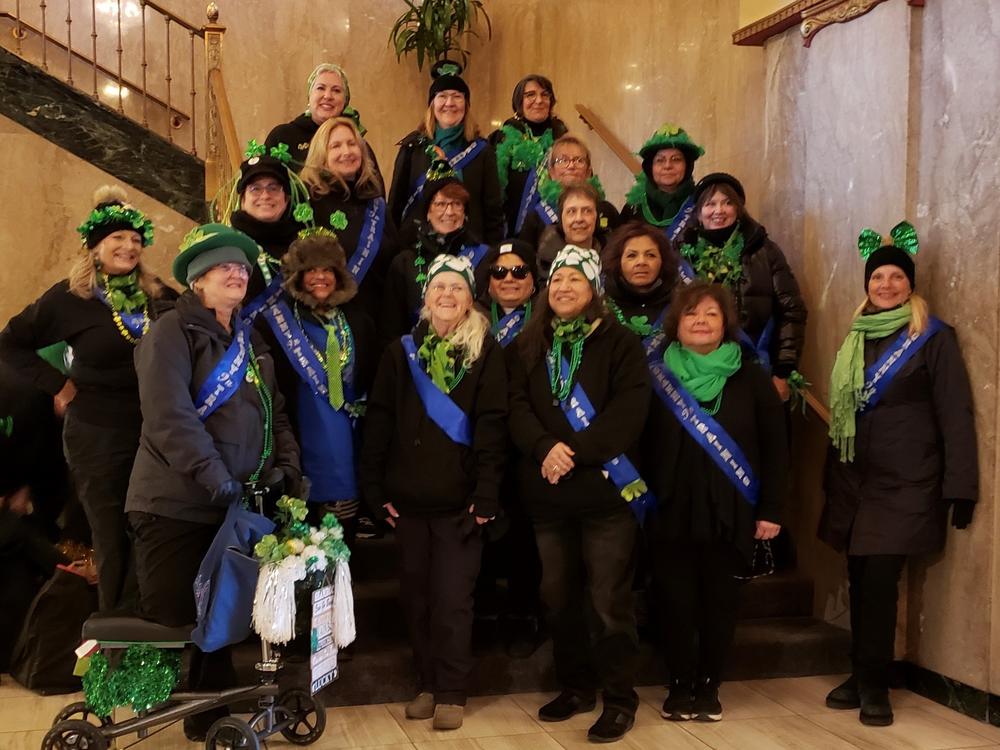Section Branding
Header Content
Dancing Grannies pay tribute to those killed in the Waukesha Christmas parade attack
Primary Content
The St. Patrick's Day parade had been hailed as a return to normalcy in Milwaukee, which canceled the celebration the past two years due to the pandemic.
But for members of the Milwaukee Dancing Grannies, a local dance troupe for grandmothers, the parade last week stirred up four-month-old memories of when three of its members and a volunteer were killed during its performance in Waukesha, Wisconsin.
"There was anxiety because people didn't know how they would be. Everybody was determined that we were going to do this parade," said Jan Kwiatkowski, one of the Dancing Grannies' co-leaders. "It was everything from anxiety to nervousness to joy and elation; the whole continuum of emotions."
In total, six people were killed and at least 62 others injured after the driver of an SUV plowed into a crowd of people at the annual parade on Nov. 21, 2021.
Among those killed were: Tamara Durand, 52; LeAnna Owen, 71; and Virginia "Ginny" Sorenson, 79. William Hospel, 81, the husband of another Grannie, also died as a result of the attack. Two others were also struck and killed; 52-year-old Jane Kulich and 8-year-old Jackson Sparks.
Since the loss of its group members last November, the surviving Dancing Grannies said they weren't going to let the trauma stop the show.
"[N]obody, especially the Grannies who were there, knew exactly how it would [feel] at that moment," Kwiatkowski said. "As a group, we had talked about how do we support each other through this. The flip side was quite honestly the joy of just dancing together again and going, 'We are back and we are going to do this and we're going to get through.'"
It's more than just exercise for older women
The Dancing Grannies started in 1984 as a jazz exercise group during a time when aerobics classes were growing in popularity thanks to workout videotapes and instructional programs.
Since then, the Grannies have become a beloved dancing group that crisscrosses Wisconsin to perform in about 25 parades each year.
It took until after the group's very first parade performance showcasing women's aerobics classes for older women for the Grannies to field more parade requests, according to Kwiatkowski.
"And from there, people liked it. They thought it was pretty cool," she said.
Their performance honors the fallen
The group's performance on March 12 paid tribute to the four Grannies killed in Waukesha.
The group wore patches with the number four embroidered on their jackets along with wristbands with the words "Granny Strong."
One lasting tradition before any parade performance has been a toast with homemade Bailey's. But this time, the Grannies honored the four members they lost. The group was also joined by Ginny's husband Dave Sorenson.
"He came and wished us well and said that he knew that Ginny would be proud," Kwiatkowski said.
During the parade, the Grannies performed a number of dances — two of which were choreographed by Ginny, who served as both the group's leader and choreographer before her death.
"She was so proud of them, and we never got to perform them then [due to COVID]," said Kwiatkowski.
"This was our first time performing them and it was like 'Ginny, we're going to do you proud.' ... and I think we did," she added.
The Grannies are growing in popularity
Following the tragedy in Waukesha last November, the Grannies have received support from across the U.S., something the group said meant a lot to them.
"It's really been just kind of amazing how people all over the place have connected to us, sending cards of support or even a message on Facebook. To take the time to do that was pretty amazing," Kwiatkowski said.
Since the parade attack last year, the surviving group members brought on 22 new grandmothers, or "Grannies in Training."
"I just feel really proud to be able to walk along with them," Judy Brunette, one of the Grannies in Training, told local TV station WISN 12.
Enrollment for the Grannies in Training program is in such high demand, there's a waitlist of nearly 30 people, said Kwiatkowski.
"We're just figuring out how we're going to get this second cohort started because we've never had as many people come at one time [to join]," she said.
In addition to the new faces joining, the group has also received invitations to perform in the Macy's Thanksgiving Day Parade and Mardi Gras.
The memory of their fallen members will always be with them, Kwiatkowski said.
"There's a lot of people in this world who've been through some pretty hard stuff. But healing is possible and is an important message to send," said added.
Copyright 2022 NPR. To see more, visit https://www.npr.org.



